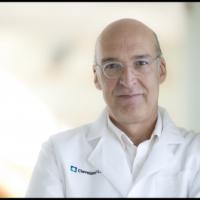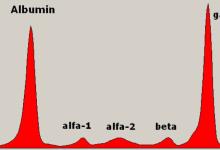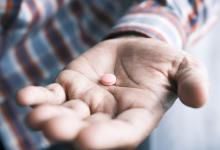Wine and the rheumatologist: on aging Save
Wine to me is passion. It’s family and friends. It’s warmth of heart and generosity of spirit. Wine is art. It’s culture. It’s the essence of civilization and the art of living. - Robert Mondavi
How long should rheumatologists age wine?
Clearly, I am writing this partially tongue in cheek, for when it comes down to aging and drinking wine we rheumatologists are not really different from anyone else. Having said this, this blog is called Wine and the Rheumatologist, so I need to get your attention. I have been collecting wines for over 30 years and am sad to say I have let many bottles age too long. The price to be paid for this is a wine that is tired and past its peak. For the collectors who may be reading this, they know all too well; but for the novitiates that are just getting into wine - let me explain a bit.
Aging does not necessarily improve or detract from a wine’s drinkability, it merely changes it. It’s a common misconception that most wines need aging to make them more drinkable. Wine is chemically alive and changes over time. Complex changes in its components, notably its sugar acid and tannins, change the characteristics of wine such as its aroma or nose, its color, and its ‘mouth feel’ and taste. While the pH of a wine does not change with age, its constituent acids change, thereby influencing its taste and smell by altering the overall balance and complexity of the wine. Wines of low pH and those rich in phenols such as tannins such as Cabernet, sangiovese, nebbiolo (among others) tend to age well. Few whites benefit from prolonged aging.
When aging has a positive effect on wine, it can soften the phenolic components. In fact, these elements undergo changes in structure, leading to visible precipitation which forms sediment that can be quite impressive. Such sediment is emblematic of a mature wine and is not a problem other than requiring it to be decanted. If wine ages ‘too long’, it can become oxidized and frankly bad. Yes, there is a cadre of great and noble reds (in particular) and some types of whites that can be amazingly enhanced by even prolonged aging, but in reality, few wines require this or even benefit from prolonged aging anymore. The noted wine writer Matt Kramer says most wine should be consumed within the first few years and 99% within 10 years. He attributes this to new changes in harvesting techniques known as green harvesting, where nowadays, most wines are harvested from far more uniformly ripe fruit than in previous times.
Let me return to rheumatology. Perhaps these admonitions should be turned into a rule or a ‘guideline’. Perhaps an ACR & EULAR Committee should be formed to examine this practice. Just kidding…
Here’s what I hope can be accomplished by this blog: to bring true stories of wine from our community forward for all to share. After my first blog, I received a note from one of my favorite people: Professor Frank Wollheim from Lund University and giant in the profession. He presented me with story of aging wine and rheumatology which has a lesson…
Mother's grandpa was a wine farmer in the Rhine valley. When I was the youngest house officer in Dr. Jan Waldenström´s department of medicine in Malmö in 1960, I fell in love with a medical student who became my wife in 1961. We are still in love and married. Her name is Magnhild and she turned out to be a teetotaler like herparents. When we married, we agreed that there was not to be any distilled beverages served when we entertained; however, wine and beer was allowed. This has worked out very well, and our friends accept the missing aquavit before and cognac after the meal. And when we are out for dinner, I always have a sober driver to take me home. Sweden has (rightly) very strict laws regarding alcohol and driving.
In the early 90s, Dr.Waldenström was our dinner guest and gave us abottle of French wine. The name contained St Francis and it was from the early 80s. I put it away in the wine cellar and forgot all about this bottle. When I rediscovered it three years ago and tried to open it, the cork crumbled and I had to empty the contents through a drilled hole through the remains. I passed the contents through a coffee filter, assuming it perhaps could be used for cooking purposes. However, I was curious enough to taste it and much to my surprise it had an exquisite mild full-bodied flavor. I drank it with the next couple of evening meals and was really sorry when it was finished it. I wish Dr. Waldenström, who loved both red and white wine would have been around. He passed away in November of 1996 at the age of 90.
The lesson? Wine is a drink of passion that affects your heart as much as your brain. The pleasure we get out of wine is influenced by when we drink it, where we drink it, and with whom. Remember we see things the way we are not the way they are…
Is there an important (or unimportant) time you shared a wine experience with colleagues? Please send stories of wine and rheumatology to me to share (calabrl@ccf.org), or comment below.









If you are a health practitioner, you may Login/Register to comment.
Due to the nature of these comment forums, only health practitioners are allowed to comment at this time.